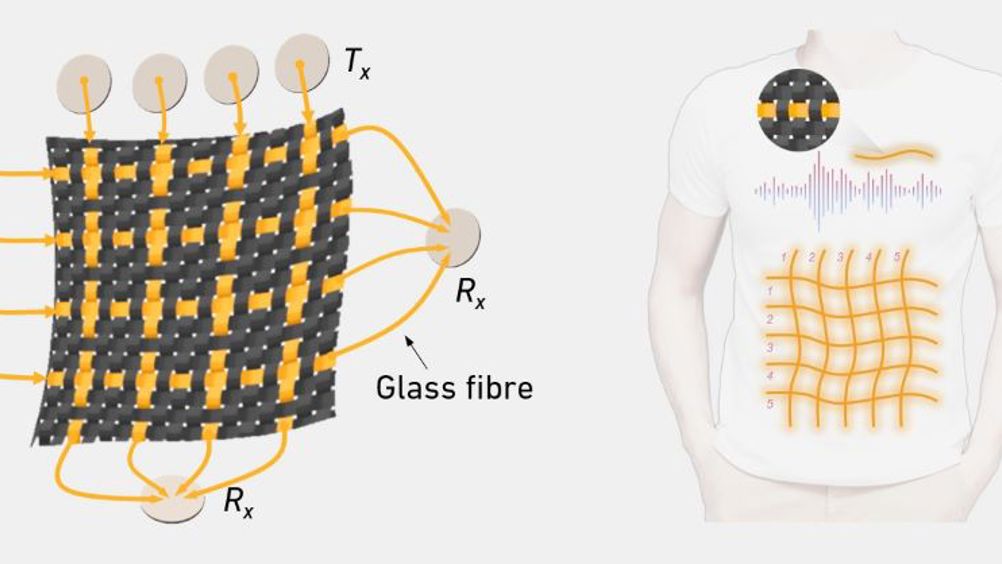SonoTextiles turn fabrics into smart sensors
Researchers at ETH Zurich have developed SonoTextiles, an advance that transforms normal fabrics into smart sensors that react to touch, pressure and movement.

Unlike some previous developments in this field, the ETH researchers pass acoustic waves through glass fibres, thereby making measurements more precise and the textiles lighter, more breathable and easier to wash.
“While research has already been conducted into smart textiles based on acoustics, we are the first to explore the use of glass fibre in combination with signals that use different frequencies,” said Yingqiang Wang, the first author of the study that has been published in Nature Electronics.
The researchers have woven glass fibres into the fabric at regular intervals. At one end of each glass fibre is a small transmitter that emits sound waves. The other end of each of the glass fibres is connected to a receiver that measures whether the waves have changed.
Each transmitter works at a different frequency, so it requires little computing power to determine which fibre the sound waves have changed on. According to ETH Zurich, previous smart textiles often struggled with data overload and signal processing issues since each sensor location had to be evaluated individually.
Register now to continue reading
Thanks for visiting The Engineer. You’ve now reached your monthly limit of news stories. Register for free to unlock unlimited access to all of our news coverage, as well as premium content including opinion, in-depth features and special reports.
Benefits of registering
-
In-depth insights and coverage of key emerging trends
-
Unrestricted access to special reports throughout the year
-
Daily technology news delivered straight to your inbox










Water Sector Talent Exodus Could Cripple The Sector
Maybe if things are essential for the running of a country and we want to pay a fair price we should be running these utilities on a not for profit...